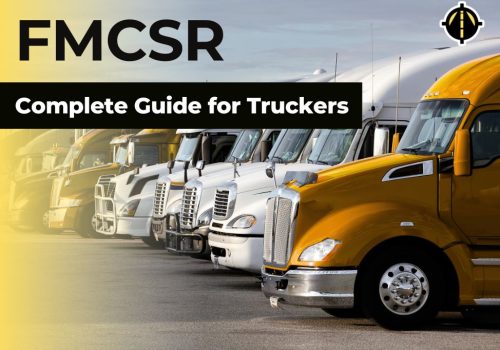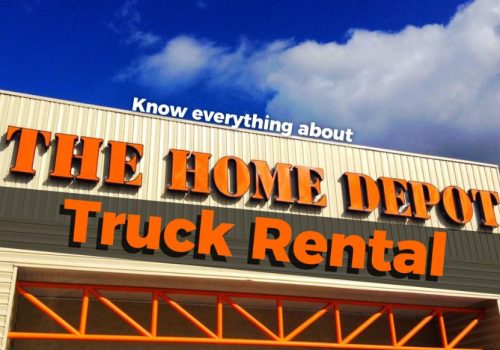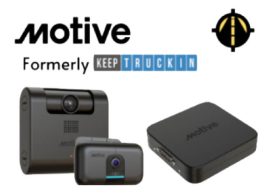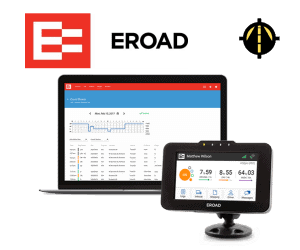Uber, which took the transport industry by storm a few years back, is now revolutionizing the freight industry with its Uber Freight application for drivers.
Truck drivers using the Uber Freight application, installed into a smartphone, can find loads to transport whenever they want to work. This helps them to take the guesswork out of deciding what jobs a driver wants and makes it easier for truckers to find work.
Uber Freight helps the American trucker whose truck meets Uber Freight vehicle requirements to “create a level playing field.”
With a simple click of a button through the Uber Freight app, a process that used to take hours and multiple phone calls to arrange can now be organized in minutes.
Truckers can access the mobile app after completing Uber Freight’s streamlined vetting process and browsing available loads. When they want the work, they just need to tap to book it. Uber sends instant confirmation of the cost, alleviating a common concern in trucking regarding load verification and payment transparency.
In this comprehensive Uber Freight guide, we will take a look at how the company makes the most use of GPS tracking technology, its evolving API integrations with Motive (formerly KeepTruckin), and updated Uber Freight vehicle requirements.
Uber Freight vehicle requirements approach
Uber Freight’s solution continues to help the trucking industry solve several challenges faced by owner-operators daily. Although the company has been on the market for several years, Uber claims it is still addressing today’s drivers’ concerns and seeking creative ways to solve them.
Uber Freight claims that the app and service eradicate many of the industry’s pain points together. The company emphasizes that ‘happy truckers make happy shippers,’ which is at the heart of its business model. As Uber continues to evolve its service, its focus remains on providing equal business opportunities and consideration for all parties involved.
Uber and Telematics

Uber provides drivers with comparative data on their driving skills. This is done by analyzing the travel data for harsh braking, acceleration, or dangerous cornering—the app now uses AI and machine learning to analyze the data. And also stores data to find location-specific trends or long-term drivers.
The purpose of Uber’s use of telematics is to promote driver safety and reduce truck crashes when a truck meets Uber Freight vehicle requirements. At the same time, the app collects valuable and useful information about routes, weather, and driver reactions.
For example, Uber may cut off drivers deemed unsafe or underperforming. The app also collects location-specific data to offer insights into things like city-wide hard-braking rates, which can help Uber refine safety measures across various routes.
GPS Tracking
Uber integrates advanced AI-powered GPS tracking systems to monitor the truck driver’s position in real time and provide performance insights. These systems are designed not only to track vehicle location but also to enhance operational efficiency and safety through advanced analytics. The GPS monitoring devices collect data from gyroscopes, accelerometers, and other sensors to improve route optimization and provide feedback on driver performance.
As a result, critical data is collected and sent for processing and long-term storage on the Uber servers. The system uses machine learning algorithms to evaluate drivers’ driving habits and generate reports, notifying officials of dangerous behaviors like harsh braking, speeding, or erratic driving. For this reason, all Uber drivers, as well as customers, are assured of their safety,
Why?
The company guarantees that the drivers are focused on the road whenever a driver is chosen for a trip. Unsafe or underperforming drivers are flagged and may be removed from the platform to maintain service quality and safety. Additionally, the data collected is used to support ongoing development in autonomous trucking and other logistics innovations.
The GPS System also tracks the following.
- Mileage and expenses
- Increase trips number
- Reduces operation Costs
- Vehicle’s whereabouts – Precise real-time tracking with improved accuracy
Uber Freight partners with Motive (formerly KeepTruckin)
Uber Freight and Motive (formerly KeepTruckin) have partnered to help improve load tracking challenges, improve visibility, and build resilient supply chains. As a result, the company has round-the-clock insight into the loads they ship
Through this partnership, Uber Freight has further refined its tracking capabilities, improving real-time visibility and providing even more accurate ETAs for shippers by integrating directly with Motive’s platform through advanced API enhancements.
Therefore, Carriers using Uber Freight, who currently use the Electronic Logging Devices (ELDs) of Motive (formerly KeepTruckin), can opt to share position data with the Uber Freight platform. And this increases their capabilities for real-time shipment tracking and decreases the need for driver check-in calls.
According to Uber Freight, the addition of ELD data gives shippers more reliable on-time pick up and delivery information about their freight. As of 2025, this partnership has evolved further. Motive’s Smart Load Board now includes AI-powered load prioritization based on driver safety scores—evaluating factors like harsh braking, speeding, and idle time. Carriers also receive load suggestions aligned with Hours of Service (HOS) availability and route efficiency, helping reduce empty miles and maximize earning potential. These updates continue to strengthen transparency and automation across the supply chain.
Motive (formerly Keep Truckin) Smart Load Board
Motive (formerly KeepTruckin) launched Smart Load Board – the first-ever freight marketplace-based ELD. The Smart Load Board—a freight marketplace-based ELD platform that leverages AI to optimize load matching. This innovation seamlessly matches loads to carriers using insights from data about routes, capacity, and driver availability. As a result, the Smart Load Board revolutionizes how trucking businesses deploy their drivers, minimize empty miles, and increase their bottom line.
Industry launch partners, including Uber Freight, Echo Global Logistics (Echo), Edge Logistics, EPES Logistics, Page Trucking, Keller Freight Solutions, and Parade, are expanding the Smart Load Board’s reach. This platform now enables carriers to automate the sharing of position data from Motive’s devices for improved load matching and enhanced operational efficiency.
What are the Benefits of the Partnership?
The following are the benefits that the carrier stands to benefit from Uber freight and Motive (formerly KeepTruckin) Partnership:
#1 Eliminates intrusive calls checks
This partnership reduces the need for frustrating check calls by providing real-time shipment tracking. Carriers can also use the Uber Freight carrier app or any Motive (formerly KeepTruckin) ELD they have on their delivery truck to get started. Additionally, the platform automates position-sharing preferences for carriers, making the process even more seamless.
#2 Visibility
Uber Freight has made a conscious effort from the beginning to make the freight business more straightforward. With the integration of advanced data analytics through Motive, shippers and carriers now have access to actionable insights, such as route optimization and real-time ETAs, further enhancing operational simplicity and efficiency. This collaboration continues to save time and improve transparency.
#3. Exclusive load access
The API integration gives access to thousands of loads you can’t find anywhere else from reliable outlets like Uber Freight. This exclusive access is complemented by automated load-matching capabilities powered by Motive’s AI-driven Smart Load Board, which helps carriers minimize empty miles and maximize earnings.
Uber Freight Partnership with Samsara
Samsara has partnered with Uber Freight to streamline operations, improve compliance processes, and enhance efficiency for shipping companies, owner-operators, and drivers. As part of this collaboration, Samsara serves as a preferred software partner for fleets of six or more trucks, offering solutions to optimize fleet management while reducing operational costs.
In 2025, Samsara launched its upgraded VG54 model, which features improved Wi-Fi bandwidth, real-time weather alerts, and faster GPS acquisition—especially useful for long-haul routes and remote areas. The VG54 also integrates directly with Uber Freight’s app for instant ELD syncing, further automating compliance reporting and real-time visibility.
Due to this partnership, the discounts on Samsara’s ELD and trailer tracking solutions will be given to qualifying carriers, with a total deduction of $25,000 under the program:
Samsara ELD Discount Program
Participating fleet companies must share their mobile data with Uber Freight from Samsara’s open API as part of the discount program. This data-sharing integration enables carriers to reduce check-in calls, increase real-time visibility, and automate critical processes such as detention handling, enhancing the overall logistics experience.
Samsara Vehicle Gateway (VG34) Discount
Uber Freight offers a $50 discount on the Samsara Vehicle Gateway (VG34), an advanced ELD solution that delivers live GPS tracking, precise HOS logging, and WiFi hotspot connectivity. Tandem with Samsara AI dash cams, this ELD could also be used for driver safety, training, and exoneration.
Samsara Asset Gateway (AG24) Discount
Uber Freight also provides a $20 discount per Samsara Asset Gateway (AG24), a versatile tracking device that ensures uninterrupted visibility of trailers and assets at load venues, optimizing fleet utilization and operational control.
If you want to get a free quote, kindly fill out the questionnaire below:
Other Integration
Uber Freight continues its partnership with Blue Yonder and Oracle, enhancing API integrations to provide a more sophisticated transportation management solution. And this power is the solution for dynamic and 24/7 real-time pricing and tendering capabilities.
The solution now provides shippers with immediate, market-based pricing insights supported by machine learning algorithms, enabling faster decision-making and improved accuracy in rate forecasting. Shippers can transfer loads seamlessly, ensuring their rates reflect current trends and securing available capacity instantly.
Additionally, Uber Freight has started integrating with Project44 in 2024 to support real-time, multimodal shipment visibility beyond trucking. This expands capabilities for shippers using rail, intermodal, and port logistics, offering seamless tracking from origin to destination. This integration now also supports predictive ETA modeling and carbon emissions tracking. Shippers can now set sustainability goals, receive insights into CO₂ emissions per load, and make more environmentally conscious routing decisions—all within their TMS dashboards. This integration now also supports advanced analytics for route optimization and fleet utilization.
How Does Uber Work
Uber Freight, at its heart, operates similarly to other freight brokers but leverages cutting-edge technology to simplify operations for shippers and carriers.
- Shippers send Uber detailed information about their shipment, including load dimensions, weight, and temperature requirements for reefer shipments.
- Carriers that satisfy Uber Freight carrier requirements search the shipments available and choose the one they want.
- The carrier gets all the information needed with Uber Freight: how much the load costs, the weight, the truck type required, etc.
- The carrier also has the freedom to pick the loads that make the most sense for them.
- Most importantly, the Uber app provides instant payment options, including same-day payments for eligible carriers, and allows trucking companies to book loads 24/7.
Uber Freight Driver-Vehicle Vetting Process
Every driver interested in working with Uber Freight must undergo a thorough digital screening and compliance process. The vetting process ensures that only truckers and vehicles meeting Uber Freight’s updated safety and regulatory standards can access the platform. This includes verifying compliance with federal and state regulations, valid insurance coverage, and safety ratings.
Uber Freight has integrated compliance software tools, such as Samsara, to streamline the vetting and onboarding process, making it faster and more efficient for drivers and carriers.
This improved vetting process builds trust among shippers and provides drivers with more job opportunities as Uber Freight’s customer base continues to grow. Drivers benefit from a significantly faster approval process, with most certifications now completed digitally within 24-48 hours, allowing them to start booking loads sooner.
This has been a positive development for truckers meeting Uber Freight vehicle requirements, as it expands their access to job opportunities with a growing customer base on the platform.
Drivers qualify for Uber Freight as independent truckers with a valid MC or DOT number. and must be approved carriers. Uber Freight registration can always be done via the Uber website. The company then contacts applicants for “carrier onboarding” documents to validate the details and ensure the applicant’s truck meets Uber Freight vehicle requirements.
Once the driver is certified and approved, which is typically within 24-48 hours, they can start booking loads 24/7 through the Uber Freight mobile app. If a carrier employs a driver, the driver must sign up with the carrier before using the Uber Freight app.
Get Motive Here!Uber Freight Vehicle Requirements
What kind of truck meets the specification for Uber Freight requirements?
Uber Freight supports 53’ FTL dry van loads, reefer (refrigerated trailers), flatbeds, and power-only loads across major freight lanes. And this would also be positive news for truck drivers because it guarantees no other special requirements. All they need is to get a truck that meets the requirements of federal and state regulations. And also ensure that the truck drivers meet Uber Freight driver requirements.
Here are some of what you’ll need to enroll for Uber Freight, become an Uber Freight driver as well as book your first load. All drivers must complete carrier and truck details through the Uber Freight app or website. And also need to provide the following information to prove all the details provided:
- Uber Freight Insurance Requirements: Insurance certificates must evidence at least $1,000,000 auto liability and $100,000 cargo liability coverage, including reefer breakdown coverage for temperature-sensitive loads (if applicable).
That is the basic insurance requirement for Uber Freight.
- Driver’s bank account information – Uber Freight use this to pay drivers using ACH direct deposit
- 53’ dry van, reefer trailers, or flatbeds with federal and state-compliant equipment standards
- Drivers must have no conditional or unsatisfactory safety rating
- DOT or Motor Carrier number
And also, a driver would need a Class A Commercial Driver’s License (CDL) to drive a vehicle. Uber Freight requires that all trucks meet the latest DOT emissions standards under EPA Phase 2 regulations. For power-only loads, drivers must also carry trailer interchange insurance to qualify. These updated requirements aim to ensure safety, regulatory compliance, and environmental responsibility across all load types.
Getting Started with Uber Freight: A Step-by-Step Guide
 Sign-Up Process
Sign-Up Process
To begin, download the Uber Freight app from the App Store or Google Play. Once installed, open the app and select the sign-up option. You’ll be prompted to enter basic information, including your name, contact details, and company information if applicable.
For carriers already registered with regulatory bodies (e.g., DOT), the app may pre-fill certain fields using public DOT databases, further streamlining the sign-up process.
 Documentation Required
Documentation Required
Prepare to submit the necessary documentation to verify your eligibility. This includes:
- A valid Commercial Driver’s License (CDL) for truckers.
- Proof of insurance, meeting Uber Freight’s minimum requirements ($1,000,000 auto liability, $100,000 cargo liability, and reefer breakdown coverage if applicable).
- A DOT or Motor Carrier (MC) number.
- For companies, details about your fleet, including the number and type of trucks, and fleet insurance policies.
 Profile Completion
Profile Completion
Complete your profile by providing additional information about your preferences, such as
- preferred routes
- Types of loads you’re interested in (dry van, reefer, flatbed, power-only, etc.)
- Availability and regions of operation
Uber Freight’s platform uses AI to analyze your preferences and past booking patterns. This helps suggest the most suitable loads, saving you time and simplifying the process.
 Navigating the App
Navigating the App
The Uber Freight app is designed with user-friendly features to ensure a seamless experience. The main dashboard displays available loads tailored to your preferences. You can search for loads by location, type, and date.
Each load listing provides detailed information, including:
- Pickup and delivery locations.
- Load weight.
- Payout.
- Estimated fuel costs and projected earnings.
The app also integrates real-time GPS tracking, allowing both carriers and shippers to monitor load progress, ensuring on-time delivery and enhanced communication.
 Booking Loads
Booking Loads
When you find a load that fits your schedule and equipment, simply tap to book it. Uber Freight will send a confirmation, including the rate details and any special instructions for the load.
Eligible carriers can benefit from instant confirmations and same-day payments for completed loads, improving cash flow and operational efficiency. The app also provides automated notifications to keep you updated on the status of your bookings.
 Completing Deliveries
Completing Deliveries
Use the app to navigate to pickup and delivery locations with route optimization and real-time tracking tools. Update the status of the load (“loaded” or “delivered”) and upload proof of delivery electronically for faster payment processing. The app also allows direct communication with shippers for special instructions or issue resolution.
 Getting Paid
Getting Paid
Uber Freight offers quick payments, including same-day options for eligible carriers. Use the app to track payment status and estimated payout dates. Ensure bank details are updated for seamless direct deposits.
Tips for Maximizing Earnings and Efficiency
- Keep your availability and preferences updated to receive AI-powered load recommendations based on your profile and past booking behavior.
- Regularly check the app for new loads, especially if you’re near major freight hubs.
- Take advantage of Uber Freight’s “Rate Lock” feature to secure predictable pricing during high-demand periods, helping you better plan your earnings.
- Use Uber Freight’s in-app communication tools to resolve issues quickly or contact shippers for special instructions during a load.
- Optimize your operations with Uber Freight’s built-in tools for route planning, estimated fuel costs, and load profitability analysis.
By following these steps and tips, you can effectively use the Uber Freight platform to find loads that suit your schedule and maximize both your efficiency and earnings.
Required Equipment Types for Uber Freight
Uber Freight offers a flexible range of equipment options, including flatbed, dry van, reefer, and power-only loads, designed to accommodate diverse shipping needs. Below are the details and requirements for each type of equipment:
Dry van
Uber Freight supports 53’ FTL dry van loads, enabling carriers to serve a variety of customers, from large corporations to small businesses. The app’s intuitive design helps carriers find and book loads quickly, ensuring efficient operations. Dry van carriers benefit from reliable demand and streamlined booking options across Uber Freight’s extensive network.
Reefer
Uber Freight partners with food and beverage distributors to ensure the smooth transportation of temperature-sensitive goods such as dairy, fresh produce, and frozen items. Reefer carriers must have food-grade reefer trailers and cargo coverage, including reefer breakdown insurance.
The platform also integrates real-time temperature monitoring through the app, ensuring compliance and greater visibility throughout the shipment process.
Power-only
Uber Freight’s power-only option allows carriers to move pre-loaded trailers provided by shippers, eliminating the need for carriers to own their own trailers. This option reduces downtime and maximizes operational efficiency, making it ideal for independent operators or fleets looking to increase capacity without investing in additional trailers.
Flatbed
Flatbed loads are essential for industries that require secure transport of oversized or irregular cargo. Uber Freight accommodates flatbed loads of 48’ and 53’, providing carriers with tools to meet safety and compliance requirements, including tie-downs, chains, and tarps. Shippers can schedule flatbed loads up to two weeks in advance via the Uber Freight platform, and carriers benefit from better load access and more reliable equipment utilization over time.
Conclusion
Freight brokers typically take between 15% and 20% of the overall payout for a single shipment. However, Uber Freight offers rates that have historically been been less than 1 percent of those payouts, meaning carriers can retain up to 99% of what the shipper pays.
While this is great news for carriers meeting Uber Freight’s vehicle requirements, it’s important to exercise caution. Uber Freight’s competitive rates may not always be sustainable, as the company could adjust its pricing model as it builds a larger customer base. Additionally, Uber Freight’s low operational costs come with trade-offs, as customer support and issue resolution may not always meet expectations.
By understanding these dynamics, carriers can take advantage of Uber Freight’s current benefits while preparing for potential changes in the future.







 Sign-Up Process
Sign-Up Process Documentation Required
Documentation Required Profile Completion
Profile Completion Navigating the App
Navigating the App Booking Loads
Booking Loads Completing Deliveries
Completing Deliveries Getting Paid
Getting Paid












 Answer 5 simple questions to request a
Answer 5 simple questions to request a
2 Responses
So at this point Uber Freight is not allowing box trucks, reefer or dry, into their delivery system. Is that correct? The power option means that a tractor could be part of an owner’s affiliation with Uber Freight and the trailers pulled would be provided by the various customers serviced. Do I have that correct as well. Much appreciated.
Hi Robert,
Uber Freight specifies on the website: “For now, you must have a 53’ dry van, reefer, or flatbed.” So, you are allowed to have a reefer and dry.
Your second question about the power option is correct. This service is currently available in California, Oklahoma, and Texas. The Poweloop program is currently available for all licensed carriers in Texas.